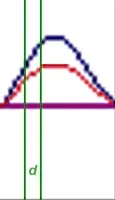blueroommusic
you want this big boy?
If you are going to EQ something, be cognisant?? of your mixing environment...duh!
and as Falken and many of you said...get it at the source. New strings on an electric guitar, mic placement, tone choice, etc...More than any other instrument IMO, electric guitar is something that to me anyways, sounds contrived, and unnatural when you put an EQ on it...unless you have a Neve, or any other nice channel strip to work with.
a little EQ can go a long way...be aware that as you get older you start to lose much of your high frequencies (even though I'm young)...I am constantly aware of making something sound too brittle, so often times if I attenuate an EQ in the highs, I will take the gain of those bands down a db or so, depending....some of us don't realize how bad our hearing loss is...go get tested.
and as Falken and many of you said...get it at the source. New strings on an electric guitar, mic placement, tone choice, etc...More than any other instrument IMO, electric guitar is something that to me anyways, sounds contrived, and unnatural when you put an EQ on it...unless you have a Neve, or any other nice channel strip to work with.

a little EQ can go a long way...be aware that as you get older you start to lose much of your high frequencies (even though I'm young)...I am constantly aware of making something sound too brittle, so often times if I attenuate an EQ in the highs, I will take the gain of those bands down a db or so, depending....some of us don't realize how bad our hearing loss is...go get tested.



 . That's why I was hoping and waiting for RDMS to wake up down there in the land where it's winter in June and throw his additional two cents in here. His description *sounds like* it's exactly the opposite of Haas presidence, which is why I don't get it. Maybe I'm misunderstanding him.
. That's why I was hoping and waiting for RDMS to wake up down there in the land where it's winter in June and throw his additional two cents in here. His description *sounds like* it's exactly the opposite of Haas presidence, which is why I don't get it. Maybe I'm misunderstanding him.